From Italy to Croatia on two wheels
New York Times
last updated: May 26,2022

A bike ride from Trieste, Italy, through
Slovenia, to the ancient city of Pula, Croatia, starts from the Adriatic
coast’s 90-degree bend on the sea’s northern coast and rolls down its eastern
shore to the tip of the Istria peninsula. The 241km leisurely journey brims
with ancient traditions, sublime food, and perched-village photo ops. History
here is measured in millenniums and empires: Roman, Byzantine, Venetian,
Napoleonic, Austro-Hungarian.اضافة اعلان
The ride follows two routes: the EuroVelo 8 and the Parenzana Cycle Trail. The trails overlap for much of the itinerary before separating and then reuniting on Croatia’s Istrian coast. The six-stage ride covers between 35 and 48 easy-to-moderate kilometers per day, with occasional challenging ascents. Cyclists pedal enough to see loads of culture while earning their seafood, pasta, and wine — but not so much that they will be exhausted.
You will start in Trieste by hopping on the 7,564km EuroVelo 8 (EV8), which extends from Cádiz, Spain, to Cyprus. The EV8 is part of the EuroVelo network, which began 25 years ago with 12 routes crisscrossing the continent. Today, the network connects 42 countries on 17 routes, covering more than 8,0467km. The most recent trail, running from Austria to Hungary, was added in 2020.
“The fact that more people are taking up cycling is great for all of us,” EuroVelo’s director, Ed Lancaster, recently told me. “Cycling supports local economies,” he said, noting that it also “reduces tourism’s environmental footprint.”
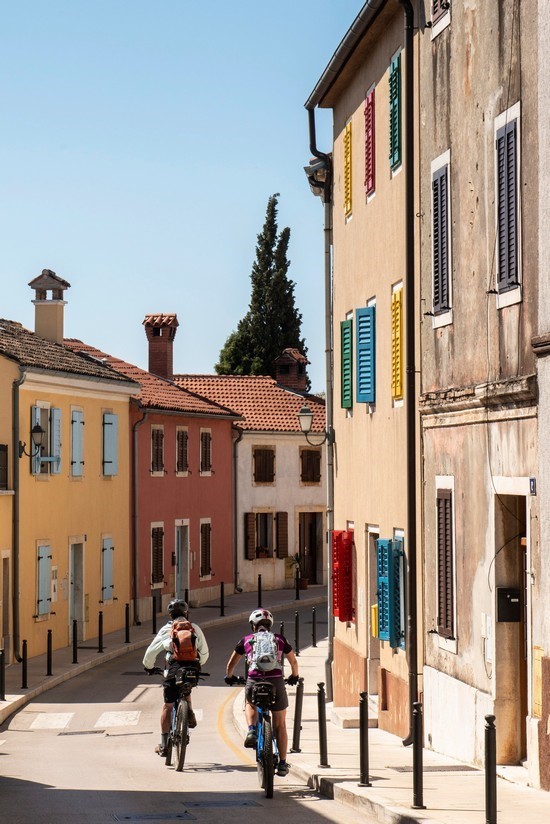
South of Trieste, in Muggia, Italy, the EV8 overlaps with the Parenzana Trail through Slovenia. The routes diverge in Croatia, where you will take the Parenzana, which follows the path of the former Parenzana railroad. Built by the Austro-Hungarian Empire in 1902, the train connected 33 stations over 122km from Trieste to the Croatian town of Poreč, on the Istrian coast. Today it provides a cycling corridor through communities known for truffles, olive oil, and wine.
Day 1: Trieste to Piran, Slovenia
48km on mostly flat, occasionally rolling, paths
After arriving in Trieste from Ljubljana, where I live, I started my journey with a two-cup morning in the home of the Illy coffee company and, arguably, Italy’s coffee capital. The first stop was the Illy Ponterosso cafe at the mouth of Canal Grande, whose outdoor tables overlook the canal flowing into the Gulf of Trieste.
From the piazza, I jumped directly onto the EuroVelo 8 and rode for nearly 14.4km to the fishing village of Muggia, where the Parenzana Trail begins. I crossed into Slovenia, which immediately lived up to its reputation for cycle-based travel. For most of the country, the asphalt path — often running parallel to traffic as it passes towns and runs through occasional stretches of forests — is flat, dedicated to bicyclists.
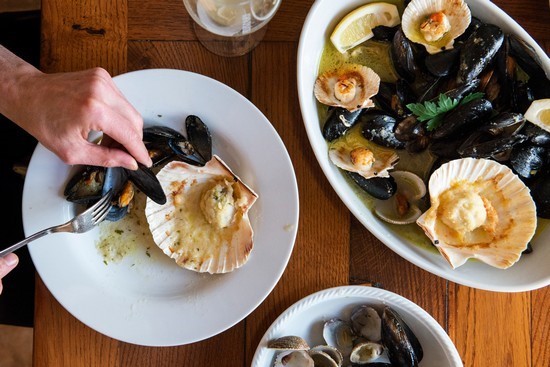
My first stop was in Koper. Slovenia’s only shipping port feels industrial until you reach its medieval, Venetian Republic-era center. I pushed my bike to Tito Square, home to the 13th-century Praetorian Palace and the 177-foot City Tower, with views down the coast.
The path hugged the shore to Izola, with its laid-back marina filled with sailboats and fishing skiffs, and climbed into the forested countryside. Soon I entered the first of several old stone tunnels along the Parenzana Trail. The trail descended into farms and vineyards on the other side of the 600-yard Valeta Tunnel.
Day 2: Piran, Slovenia, to Grožnjan, Croatia
37km, most of them a steady ascent on the Parenzana Trail
As I pedaled along the Croatian border, Slovenia’s Sečovlje Salina Nature filled the vista. Soon after, the two routes forked. The EuroVelo 8 continues to the Adriatic, and the Parenzana, which I followed, made a U-turn as it headed into Istria’s inland, foodie center.
In the hilltop town of Buje, I stopped for a beer tasting at San Servolo Resort. Nestled in wine country, Istria’s best beer maker has built a compound with a brewery, steakhouse, pizzeria, hotel, and spa with brew baths.
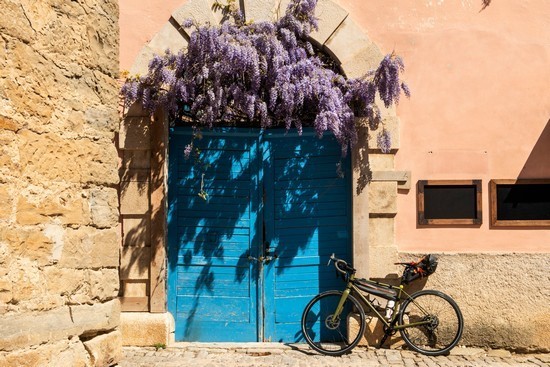
I continued my relaxed ascent to Grožnjan, a bohemian village perched at around 900 feet, where a Neolithic fort once monitored the peninsula below. Today, artists’ ateliers line its pedestrian-only streets and draw visitors, who flock here every summer for a jazz festival, as well as drama, music, dance, and meditation workshops.
Day 3: Grožnjan to Motovun, Croatia
35km total, including 27 on the Parenzana and an 8km side trip
In the town of Livade, I turned east on a service road that parallels the Mirna River and pedaled to the community of Gradinje and Konoba Dolina, where I sat on the restaurant’s wraparound porch.
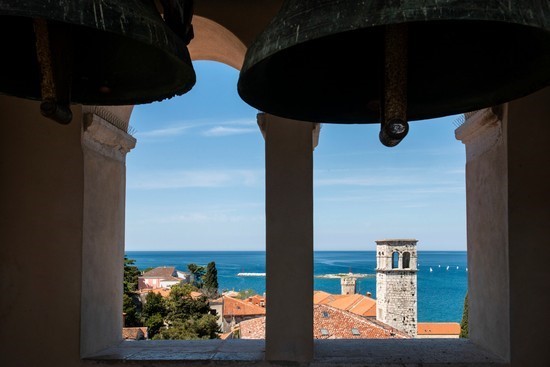
The day’s only real climb (around 600 feet) took me to Motovun. At the top, I walked the town’s steep, medieval, flagstone streets to Konoba Mondo, another intimate bistro famous for truffles. This time I had steak topped with slivers of black truffles, an Istrian red called teran, and the tavern’s knockout panna cotta in a wildberry sauce.
Day 4: Motovun to Poreč, Croatia
37km on the Parenzana, a rolling and sometimes flat stretch that took me back toward the sea
Istria is wine country. The Greeks grew grapes here more than 2,500 years ago. Today, there are hundreds of winemakers; more than 100 are officially associated with the peninsula’s wine roads. Of the many varieties produced, the dominant two are Malvasia, a white, and teran, a red.
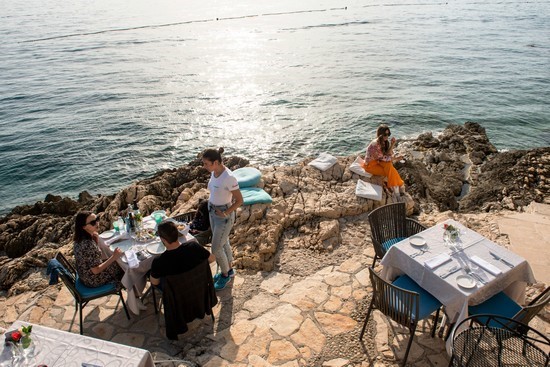
Poreč’s Old Town is a compact tangle of streets resting on a spit of land thrust into the sea. Its recorded history dates back thousands of years. The Romans established an important colony, Parentium, in the second century B.C. However, it is the UNESCO-inscribed Euphrasian Basilica, from the sixth century A.D., that has become the town’s calling card. The sprawling Byzantine-era complex borders the shore alongside bars, shops, and restaurants. I stood inside the central apse, mesmerized by the mosaics: a swirl of marble, ivory and mother-of-pearl.
Day 5: Poreč to Rovinj, Croatia
43km, mostly on the EV8, with two challenging climbs
The Parenzana ended as I left Poreč on the seaside Route 143, and the EuroVelo 8 took over for the past two days.
I pedaled through the town of Vrsar before climbing above the Lim Channel and then descending to its edge. At the bottom of the 12km-long, fjordlike channel, which feeds into the sea and creates perfect conditions for shellfish farming, I stopped at Restaurant Fjord (+385 52 448 222), on the channel’s banks. After a pick-me-up of a half-dozen European flat oysters harvested within view of my table, I climbed 492 feet back up the fjord’s south face.
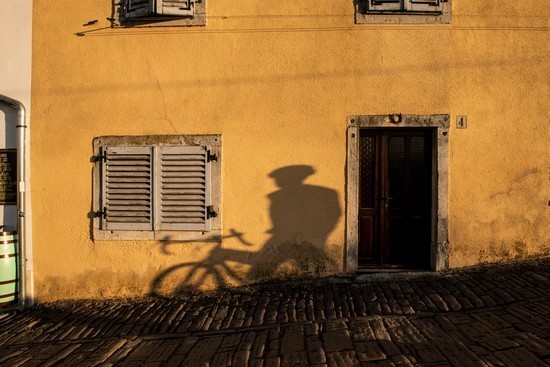
The day ended in Rovinj, more than halfway down the coast. The sun was setting on the town’s row of pastel buildings overlooking the Adriatic. The center — another compact, peninsular collection of serpentine alleys — teemed with tourists and locals. Croats stood around converted-barrel tables drinking white wine next to the outdoor market. Visitors studied maps under the 17th-century Balbi’s Arch, which sits between the main square and Grisia Street. From there, they would lumber up the cobbled street, crowded with boutiques and galleries, to the hilltop, 18th-century Church of St. Euphemia.
Day 6: Rovinj to Pula, Croatia
40 easy-to-moderate kilometers on a coast-hugging stretch of the EV8
By day 6, I was used to the routine: wake, ride, explore. What I have never grown accustomed to, even after living in the region for years, is the amount of culture packed into every locale along this 241km, three-country ride. Pula, Croatian Istria’s largest city and my final destination, was no exception.
A mix of industrial, shipbuilding grit, and ancient culture, Pula is famous for its sprawling Roman amphitheater. I rode straight there, eager to see the first-century structure, known locally as the Arena. It is still in use as a concert venue and the sannual Pula Film Festival site I then pedaled to a cafe-bar on the main square — the site of the ancient Forum, from the first century B.C., and the Temple of Augustus.
After cycling from the top of Istria to the bottom, I was again on a plaza staring at the Adriatic. Like that morning in Trieste, which now seemed weeks ago, I decided to splurge with two drinks. This time I opted for ice-cold beer.
What, how, and when?
For touring, I ride a gravel bike, which combines long-distance rideability with rough-and-tumble strength. I carry four bike packs: a seat pack for clothes; a frame pack for tools; a large handlebar pack for extra tools and toiletries; and a smaller handlebar pack for passport, wallet, notebooks, and maps.
My trip began with a three-hour train from Ljubljana, where I live, to Trieste. In addition to the 9.90-euro train ticket, there was an additional 5-euro charge for my bike. At the end of my tour, I took the train back to the Slovenian capital from Pula. (For those returning to Trieste, taking the train back through Ljubljana is still the fastest option.)
I recommend two bike rental spots in Trieste: Ones, next to the Canal Grande, and Trieste Green Tour, a five-minute walk north from the canal.
The ideal times for this ride are spring, when wildflowers are in bloom, but tourist season is not, and fall, when temperatures are perfect, and grape and olive harvests are in full swing.
Read more Travel
Jordan News
The ride follows two routes: the EuroVelo 8 and the Parenzana Cycle Trail. The trails overlap for much of the itinerary before separating and then reuniting on Croatia’s Istrian coast. The six-stage ride covers between 35 and 48 easy-to-moderate kilometers per day, with occasional challenging ascents. Cyclists pedal enough to see loads of culture while earning their seafood, pasta, and wine — but not so much that they will be exhausted.
You will start in Trieste by hopping on the 7,564km EuroVelo 8 (EV8), which extends from Cádiz, Spain, to Cyprus. The EV8 is part of the EuroVelo network, which began 25 years ago with 12 routes crisscrossing the continent. Today, the network connects 42 countries on 17 routes, covering more than 8,0467km. The most recent trail, running from Austria to Hungary, was added in 2020.
“The fact that more people are taking up cycling is great for all of us,” EuroVelo’s director, Ed Lancaster, recently told me. “Cycling supports local economies,” he said, noting that it also “reduces tourism’s environmental footprint.”

South of Trieste, in Muggia, Italy, the EV8 overlaps with the Parenzana Trail through Slovenia. The routes diverge in Croatia, where you will take the Parenzana, which follows the path of the former Parenzana railroad. Built by the Austro-Hungarian Empire in 1902, the train connected 33 stations over 122km from Trieste to the Croatian town of Poreč, on the Istrian coast. Today it provides a cycling corridor through communities known for truffles, olive oil, and wine.
Day 1: Trieste to Piran, Slovenia
48km on mostly flat, occasionally rolling, paths
After arriving in Trieste from Ljubljana, where I live, I started my journey with a two-cup morning in the home of the Illy coffee company and, arguably, Italy’s coffee capital. The first stop was the Illy Ponterosso cafe at the mouth of Canal Grande, whose outdoor tables overlook the canal flowing into the Gulf of Trieste.
From the piazza, I jumped directly onto the EuroVelo 8 and rode for nearly 14.4km to the fishing village of Muggia, where the Parenzana Trail begins. I crossed into Slovenia, which immediately lived up to its reputation for cycle-based travel. For most of the country, the asphalt path — often running parallel to traffic as it passes towns and runs through occasional stretches of forests — is flat, dedicated to bicyclists.

My first stop was in Koper. Slovenia’s only shipping port feels industrial until you reach its medieval, Venetian Republic-era center. I pushed my bike to Tito Square, home to the 13th-century Praetorian Palace and the 177-foot City Tower, with views down the coast.
The path hugged the shore to Izola, with its laid-back marina filled with sailboats and fishing skiffs, and climbed into the forested countryside. Soon I entered the first of several old stone tunnels along the Parenzana Trail. The trail descended into farms and vineyards on the other side of the 600-yard Valeta Tunnel.
Day 2: Piran, Slovenia, to Grožnjan, Croatia
37km, most of them a steady ascent on the Parenzana Trail
As I pedaled along the Croatian border, Slovenia’s Sečovlje Salina Nature filled the vista. Soon after, the two routes forked. The EuroVelo 8 continues to the Adriatic, and the Parenzana, which I followed, made a U-turn as it headed into Istria’s inland, foodie center.
In the hilltop town of Buje, I stopped for a beer tasting at San Servolo Resort. Nestled in wine country, Istria’s best beer maker has built a compound with a brewery, steakhouse, pizzeria, hotel, and spa with brew baths.

I continued my relaxed ascent to Grožnjan, a bohemian village perched at around 900 feet, where a Neolithic fort once monitored the peninsula below. Today, artists’ ateliers line its pedestrian-only streets and draw visitors, who flock here every summer for a jazz festival, as well as drama, music, dance, and meditation workshops.
Day 3: Grožnjan to Motovun, Croatia
35km total, including 27 on the Parenzana and an 8km side trip
In the town of Livade, I turned east on a service road that parallels the Mirna River and pedaled to the community of Gradinje and Konoba Dolina, where I sat on the restaurant’s wraparound porch.

The day’s only real climb (around 600 feet) took me to Motovun. At the top, I walked the town’s steep, medieval, flagstone streets to Konoba Mondo, another intimate bistro famous for truffles. This time I had steak topped with slivers of black truffles, an Istrian red called teran, and the tavern’s knockout panna cotta in a wildberry sauce.
Day 4: Motovun to Poreč, Croatia
37km on the Parenzana, a rolling and sometimes flat stretch that took me back toward the sea
Istria is wine country. The Greeks grew grapes here more than 2,500 years ago. Today, there are hundreds of winemakers; more than 100 are officially associated with the peninsula’s wine roads. Of the many varieties produced, the dominant two are Malvasia, a white, and teran, a red.

Poreč’s Old Town is a compact tangle of streets resting on a spit of land thrust into the sea. Its recorded history dates back thousands of years. The Romans established an important colony, Parentium, in the second century B.C. However, it is the UNESCO-inscribed Euphrasian Basilica, from the sixth century A.D., that has become the town’s calling card. The sprawling Byzantine-era complex borders the shore alongside bars, shops, and restaurants. I stood inside the central apse, mesmerized by the mosaics: a swirl of marble, ivory and mother-of-pearl.
Day 5: Poreč to Rovinj, Croatia
43km, mostly on the EV8, with two challenging climbs
The Parenzana ended as I left Poreč on the seaside Route 143, and the EuroVelo 8 took over for the past two days.
I pedaled through the town of Vrsar before climbing above the Lim Channel and then descending to its edge. At the bottom of the 12km-long, fjordlike channel, which feeds into the sea and creates perfect conditions for shellfish farming, I stopped at Restaurant Fjord (+385 52 448 222), on the channel’s banks. After a pick-me-up of a half-dozen European flat oysters harvested within view of my table, I climbed 492 feet back up the fjord’s south face.

The day ended in Rovinj, more than halfway down the coast. The sun was setting on the town’s row of pastel buildings overlooking the Adriatic. The center — another compact, peninsular collection of serpentine alleys — teemed with tourists and locals. Croats stood around converted-barrel tables drinking white wine next to the outdoor market. Visitors studied maps under the 17th-century Balbi’s Arch, which sits between the main square and Grisia Street. From there, they would lumber up the cobbled street, crowded with boutiques and galleries, to the hilltop, 18th-century Church of St. Euphemia.
Day 6: Rovinj to Pula, Croatia
40 easy-to-moderate kilometers on a coast-hugging stretch of the EV8
By day 6, I was used to the routine: wake, ride, explore. What I have never grown accustomed to, even after living in the region for years, is the amount of culture packed into every locale along this 241km, three-country ride. Pula, Croatian Istria’s largest city and my final destination, was no exception.
A mix of industrial, shipbuilding grit, and ancient culture, Pula is famous for its sprawling Roman amphitheater. I rode straight there, eager to see the first-century structure, known locally as the Arena. It is still in use as a concert venue and the sannual Pula Film Festival site I then pedaled to a cafe-bar on the main square — the site of the ancient Forum, from the first century B.C., and the Temple of Augustus.
After cycling from the top of Istria to the bottom, I was again on a plaza staring at the Adriatic. Like that morning in Trieste, which now seemed weeks ago, I decided to splurge with two drinks. This time I opted for ice-cold beer.
What, how, and when?
For touring, I ride a gravel bike, which combines long-distance rideability with rough-and-tumble strength. I carry four bike packs: a seat pack for clothes; a frame pack for tools; a large handlebar pack for extra tools and toiletries; and a smaller handlebar pack for passport, wallet, notebooks, and maps.
My trip began with a three-hour train from Ljubljana, where I live, to Trieste. In addition to the 9.90-euro train ticket, there was an additional 5-euro charge for my bike. At the end of my tour, I took the train back to the Slovenian capital from Pula. (For those returning to Trieste, taking the train back through Ljubljana is still the fastest option.)
I recommend two bike rental spots in Trieste: Ones, next to the Canal Grande, and Trieste Green Tour, a five-minute walk north from the canal.
The ideal times for this ride are spring, when wildflowers are in bloom, but tourist season is not, and fall, when temperatures are perfect, and grape and olive harvests are in full swing.
Read more Travel
Jordan News

